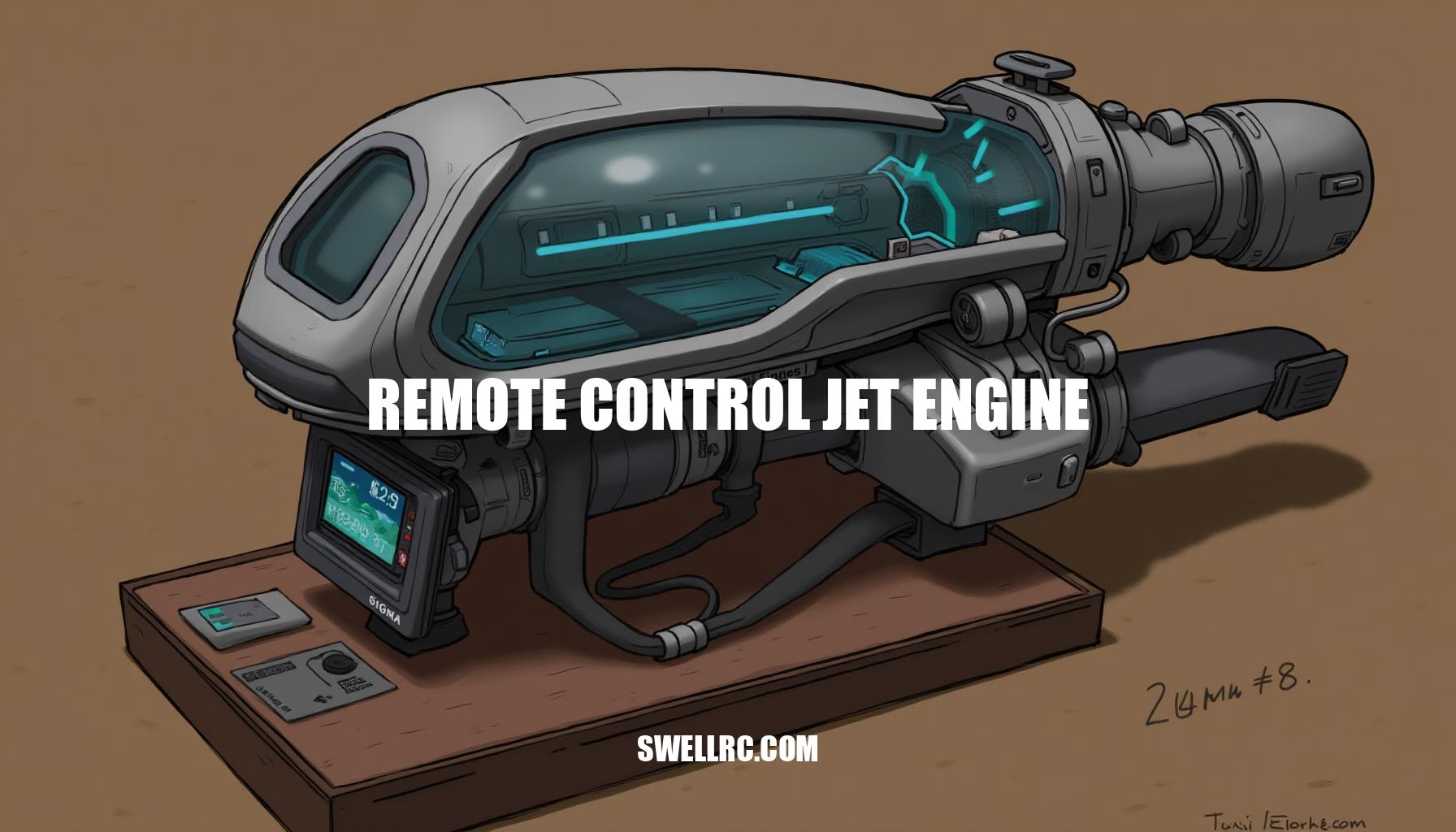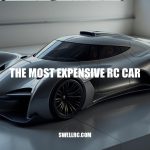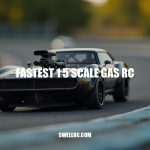The Ultimate Guide to Remote Control Jet Engines
I still remember the first time a mini turbine spooled up just a few feet from me—the whistle rose to a needle-sharp scream, a breath of warm kerosene brushed my hand, and the jet leapt forward like it had been yanked by the horizon. That unforgettable moment sent me down the rabbit hole of remote control jet engines: exploring how they work, why they’re so addictive, and which setups offer the best balance for real-world flying. RC jets stand at the pinnacle of the hobby because they shrink full-scale aerospace physics into airframes small enough to tuck in the car.
Unlike traditional propeller planes that push air backward with spinning blades, an RC jet engine compresses air, mixes it with fuel, ignites the blend, and hurls hot gases out the back—generating pure thrust. Today’s scale models can look startlingly realistic; even foam airframes like the KT RC foam aircraft fighter drone jet capture the stance and speed of modern fighters with impressive accuracy. In this guide, drawn from bench tests, field flights, and countless hours of tinkering with various RC hobby engines and micro jet engines, I’ll help you choose, fly, and maintain your remote-controlled aircraft with a confident grin, maximizing your RC plane performance and enjoyment of the RC propulsion system.
2. How remote control jet engines work: the inner mechanics
At its core, a model jet engine is a tiny version of what powers airliners, providing an exciting glimpse into how does a remote control jet engine work. The process involves several key stages that collectively generate RC turbine thrust. Here’s the fascinating flow I observed during my first teardown of a micro jet engine:
- Air intake: the engine breathes in ambient air, beginning the combustion cycle.
- Compressor: spinning blades squeeze the incoming air, raising its pressure similar to a mechanical lung, preparing it for ignition.
- Combustion: atomized RC jet fuel mixes with the compressed air; ignition converts chemical energy into a roaring, expanding gas.
- Turbine: a downstream wheel extracts energy to keep the compressor spinning efficiently.
- Nozzle: the remaining hot gases accelerate out the back, producing thrust that propels the model forward.
Think of it as a hair dryer meeting a bonfire, but precisely engineered to balance forces at over 100,000 RPM.
On my bench, the spool-up offers a distinct auditory lag—evidence of the compressor reaching operating speed before the thrust surges—demonstrating the subtleties of turbine engine performance.
For those exploring electric alternatives, the electric ducted fan (EDF) is an elegant option. Unlike combustion turbines, EDFs use a high-RPM fan housed in a smooth shroud to accelerate air directly, creating thrust quietly and with minimal maintenance. This method offers a different experience from a turbine engine for RC plane, with unique throttle feel and operational characteristics.
If you’re curious about power systems, comparing RC turbine thrust to electric fan propulsion, this overview of an electric jet engine for RC plane is an excellent starting point.
Meanwhile, a working model jet engine resource provides detailed build insights and deeper understanding of combustion-based turbines.
Both paths aim to efficiently throw mass backward to achieve forward motion, illustrating the fascinating engineering behind how does a remote control jet engine work and showing the exciting technology in model jet engines and micromicro jet engines for enthusiasts and hobbyists alike.
3. Types of RC jet engines: electric, turbine, and hybrid
Flying different RC jet engine types offers unique experiences tailored to various pilot preferences and skill levels. I’ve flown electric EDFs, liquid-fueled turbines, and intriguing hybrid arrangements, each boasting distinct advantages. Electric EDFs provide instantaneous throttle response, minimal maintenance, and are perfect for parks and clubs with strict noise regulations—making them arguably the best RC jet engine for beginners.
Turbine engines, fueled by kerosene or Jet A, deliver unmatched realism with roaring sound and visible exhaust, as well as vast thrust potential, but require commitment for setup, safety, and mastering their learning curve. Hybrids combine electric boosts to spool turbines faster or mesh EDF and turbine power across fleets; while not mainstream yet, they’re practical in niche builds.
| Criteria | Electric EDF | Fuel Turbine | Hybrid Systems |
|---|---|---|---|
| Power-to-Weight Ratio | Moderate | High | Moderate to High |
| Noise Level | Low | High (authentic) | Medium |
| Fuel vs Electric Costs | Electricity (Lower) | Kerosene/Jet A (Higher) | Variable |
| Maintenance & Service Intervals | Low | High – requires fuel filtration, clean air, fresh batteries | Medium |
| Skill Level Needed | Beginner to Intermediate | Advanced | Intermediate to Advanced |
| Afterburner System Availability | Rare or Simulated | Often Equipped | Emerging |
| Ideal Application | Training, Club Flying | Scale Realism, High Performance | Specialized Builds |
When considering electric vs fuel RC jet engines, it helps to know your priorities. For scale jet realism and thrust-density bragging rights, check out the largest RC jet engine for sheer scale and the most powerful RC jet engine for peak thrust. However, for everyday flying, a reliable RC hobby engine with balanced thrust—70–120 mm EDFs or 60–140 N mini jet turbine—is preferred.
From experience, turbines thrive on impeccable fuel filtration, fresh batteries, and clean air. Electric EDFs reward attention to the synergy of fan, motor, and ESC selection, along with smooth inlet and duct design to minimize turbulence losses and maximize efficiency. Whether flying a mini jet turbine or a brushless electric setup, honing these details elevates performance dramatically.
4. Applications and real-world performance
In the world of remote-controlled aircraft and watercraft, jet engines turn precise setups into breathtaking RC plane performance and speed. Scale RC F-35-style airframes excel with both turbine and EDF installs, depending on field rules—check out this RC F-35 overview for layout ideas. In my own tests, sport EDFs cruise around 90–120 mph with crisp throttle steps, while mid-size turbines stretch 140–200+ mph, delivering that unmistakable spool and roar.
You truly feel the difference on final approach: EDFs tend to float a bit more, while turbines carry energy farther and require disciplined throttle management.
When it comes to RC boat turbine power, the thrill is specialized and intense. A purpose-built RC boat turbine engine or RC boat turbo jet can deliver blistering straight-line speed accompanied by a scream that echoes off the shoreline. Key tuning and safety tips I’ve gathered include protecting intakes from spray, securing fuel lines against vibration, and closely monitoring EGT and temperatures to optimize your RC propulsion system.
Regardless of platform, always prioritize a robust radio link, clear failsafe behavior, and establishing a safe startup zone; remember, jet thrust amplifies small setup errors into big surprises.
Below is a performance chart to compare typical top speed, throttle response, fuel/electric consumption, and control feel across EDF vs turbine planes and boats, factoring in critical aspects like thrust-to-weight ratio and overall tuning and safety considerations:
| Platform | Top Speed (mph) | Throttle Response | Fuel/Electric Consumption | Control Feel | Thrust-to-Weight Ratio |
|---|---|---|---|---|---|
| Sport EDF RC Plane | 90–120 | Crisp, linear steps | Moderate (electric) | Floaty on final approach | 0.8 – 1.0 |
| Mid-Size Turbine RC Plane | 140–200+ | Rapid spool-in, powerful | High (fuel) | Energetic, demanding precise throttle | 1.1 – 1.5+ |
| RC Boat Turbo Jet | High 60s–80s | Instantaneous | Moderate to high (fuel) | Raw, thrilling acceleration | 1.0 – 1.3 |
| RC Boat Turbine Engine | 80–100+ | Smooth, steady spool | High (fuel) | Stable at high speed | 1.2 – 1.5+ |
Whether flying scale remote-controlled aircraft or pushing your RC boat turbine to the limits, understanding your setup’s nuances—especially thrust-to-weight ratio and fuel/electric consumption—helps ensure both thrilling performance and safety throughout your sessions.
5. Buying guide: what to look for in a remote control jet engine
When exploring the buying guide for RC jet engines, it’s crucial to consider several key factors that directly influence your overall satisfaction and performance. After comparing engines side by side, I’ve compiled a shortlist that can help you make an informed decision. First, the thrust rating stands out as a primary indicator: for sport flying, aim for a thrust-to-weight ratio of 0.8–1.0:1, while for unlimited vertical maneuvers, target 1.1–1.4:1.
Next, weight and balance should not be overlooked—matching the fan diameter or turbine class to your airframe’s duct and center of gravity (CG) envelope ensures stable flight characteristics.
When deciding between electric vs gas RC jet engines, consider the power system and fuel requirements. Electric ducted fans (EDFs) need well-rated Electronic Speed Controllers (ESCs) and high-C battery packs, whereas turbines run on clean kerosene or Jet A fuel, demanding reliable fuel pumps and a healthy ECU battery for optimal performance. Durability and support also play a significant role—look for quality bearings, availability of spare parts, solid warranties, and responsive vendors who can assist with maintenance tips and troubleshooting.
Noise levels and community regulations are another consideration; some flying clubs limit turbine use or require mufflers and spotters due to the louder operation. Lastly, take your budget into account: complete EDF setups typically range from $250 to $800, while quality turbines generally start around $1,500 to $2,500, potentially exceeding $5,000 once accessories are included.
To streamline your selection, the model jet engine hub (https://www.swellrc.com/model-jet-engine/) is an invaluable resource. It allows you to compare thrust classes, fan sizes, and installation considerations all in one place. Remember, the best engine isn’t necessarily the one with the largest number on the box, but rather the one that fits your runway length, maintenance appetite, adherence to community rules, and overall budget.
Keeping these factors in mind will help you choose the perfect RC jet engine for an enjoyable and successful flying experience.
6. Maintenance and longevity: getting the most from your jet engine
Good habits turn a great engine into a long-lived one. My routine after each flying day involves key maintenance tips for remote control jet engines to ensure optimal performance and longevity. First, I perform a visual inspection for FOD, loose fasteners, and chafed fuel or silicone lines.
Next, I check or replace the fuel filter since turbines hate dirty fuel—proper fuel filtration is crucial to avoid clogging and maintain efficient combustion. Logging idle RPM, peak EGT/amps, and any anomalies helps track performance trends. Cleaning ducts and inlets is essential because EDF losses often hide in lint, dents, and misalignments, making EDF calibration a vital step.
Battery health checks prevent hot starts in turbines and desyncs in EDFs.
Common mistakes include rushing the start sequence, leading to hot starts and cooked glow plugs; skipping cool-down, which accelerates bearing wear; and flying with a marginal ESC, causing EDF thrust sag or sudden shutdowns. For hobby jet engines, bearing condition and fuel quality outweigh chasing extra Newtons on the spec sheet. Below is a troubleshooting table to help chase down issues quickly by matching symptoms with likely causes and fixes, a practical guide for troubleshooting RC jet engines:
| Symptom | Likely Cause | Fix |
|---|---|---|
| Hot start | Improper start sequence, excess fuel | Follow proper start procedures, check glow plug health |
| Bearing wear | Skipping cool-down period | Allow engine to cool gradually before shutdown |
| EDF thrust sag/shutdown | Marginal ESC, battery weakness | Check and replace ESC/battery as needed, ensure proper EDF calibration |
| Reduced power | Clogged fuel filter or dirty fuel | Replace filter, ensure clean fuel (key for maintenance tips for remote control jet engines) |
| Fuel leaks | Damaged or chafed fuel lines | Inspect and replace fuel/silicone lines |
Adhering to this after-run procedure combined with attentive routine checks translates into reliable spools, cooler temperatures, and that smooth, endless hum on the downwind leg.
Remember, investing a little discipline here pays back with consistent thrust and performance gains, ensuring your RC turbine thrust and overall flying experience remain exceptional.
7. The future of remote control jet engines
What excites me most is how fast this niche keeps evolving, showcasing remarkable innovation in RC jet engines. Batteries and motors are becoming denser and cooler, significantly boosting electric efficiency and pushing EDF (Electric Ducted Fan) technology into new realms. On the turbine front, the advent of 3D-printed turbines—especially hot-section parts—alongside ceramic and hybrid bearings, and smarter ECUs, is vastly improving both reliability and user-friendliness.
I’ve observed promising experiments involving hydrogen blends and alternative fuels in microturbines.
Though early stage, these efforts may pave the way for hybrid RC jet engines with cleaner combustion and reduced odor. Additionally, the realm of aerospace miniaturization is rapidly advancing, with telemetry-rich powertrains that automatically tune idle and acceleration, as well as plug-and-play airframes designed for optimal ducting and cooling.
At the heart of this progress is community testing: forums brimming with discussions, fun-flys, and late-night bench sessions where a prototype suddenly ignites and cheers erupt. Joining this world feels like becoming part of aviation history in miniature, with the next chapter being actively written in garages across the globe.
8. Conclusion: why RC jet engines are worth every second of wonder
From that first whistle to my latest successful maiden flight, RC hobby engines have taught me more about airflow, energy, and patience than any other corner of the hobby. This RC jet engine summary covers how these remarkable machines work, exploring the nuances of each model jet engine type and highlighting where each turbine engine for RC plane truly shines.
When selecting your setup, factors like RC plane performance and reliability are key. Whether you’re diving into beginner RC jets or advancing to more complex turbines, it’s essential to:
- Explore various models to find what suits your style and goals.
- Compare engines meticulously to balance power, weight, and efficiency.
- Read detailed build logs to learn from others’ experiences.
- Ask questions within the community to deepen your understanding.
The more I tinker, the clearer it becomes that this pursuit is a perfect blend of science and joy. When you finally nudge the throttle and feel a clean, eager spool, you’ll understand why so many enthusiasts never look back.
Frequently Asked Questions
- How powerful can a remote-controlled jet engine be?
Modern model turbines commonly produce 40–300 N (9–67 lbf) of thrust, with specialty units exceeding that for large airframes. In practical terms, that’s enough to push 10–35 lb jets to 140–200+ mph; the limiting factors are airframe drag, inlet design, and pilot tolerance for speed. - What’s the difference between an electric and a gas-powered RC jet engine?
Electric jets (EDFs) use a brushless motor and ducted fan—clean, lower maintenance, instant throttle, and typically quieter. Gas/kerosene turbines compress and combust air/fuel for thrust—louder, more complex, higher realism, and excellent thrust density. EDFs suit beginners and restricted fields; turbines reward experienced pilots seeking authentic sound and feel. - How much does a good RC jet engine cost?
Quality EDF power systems (fan, motor, ESC) usually run $250–$800, depending on diameter and battery choice. Entry to mid-class turbines generally start around $1,500–$2,500 and can exceed $5,000 when you include ECU, pump, lines, filters, and accessories. - Are remote control jet engines safe for beginners?
Yes—with the right path. Start with EDFs to learn jet aerodynamics, higher landing speeds, and throttle management with minimal risk. Move to turbines under mentorship, follow strict startup and fueling procedures, and use a dedicated safety area. Respect heat, exhaust, and spin hazards at all times. - What RC planes are compatible with jet engines?
Many purpose-built jet airframes accept EDFs or turbines. Foam EDF jets are excellent trainers, while composite or balsa airframes are typical for turbines due to heat and structural loads. Always match thrust class and fan/turbine size to the manufacturer’s recommended range to maintain balance and cooling.



